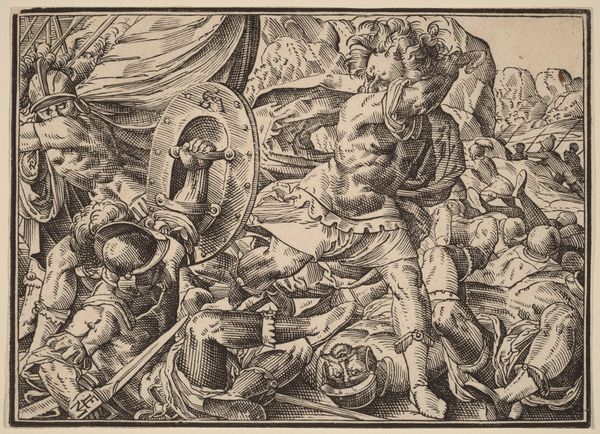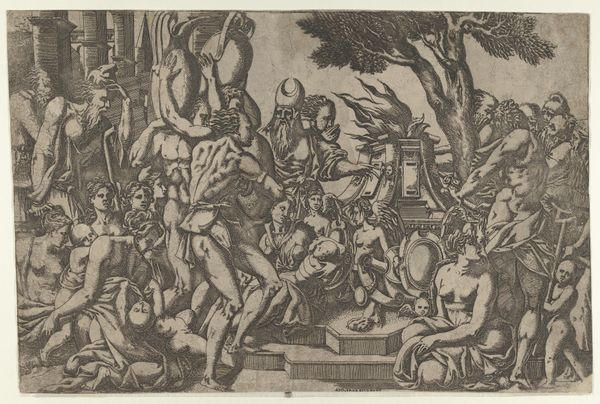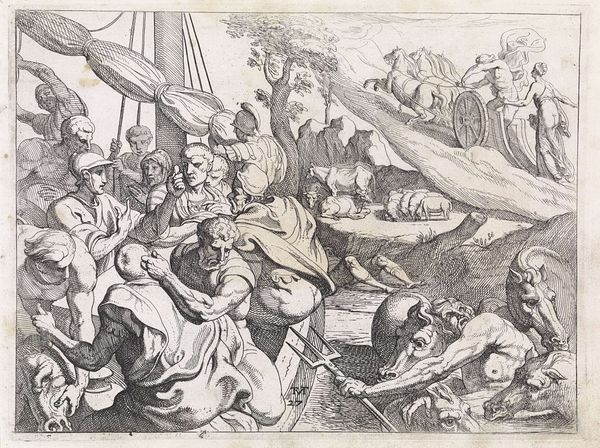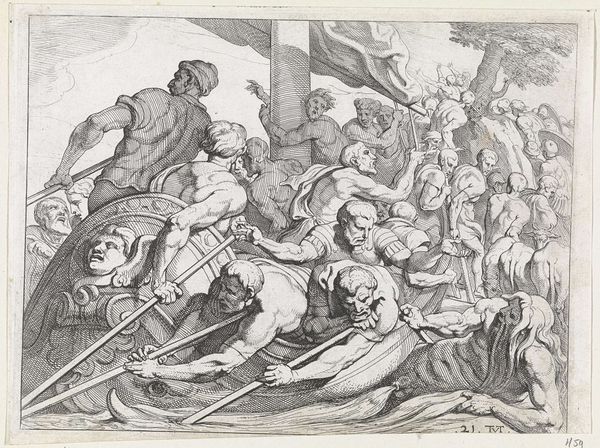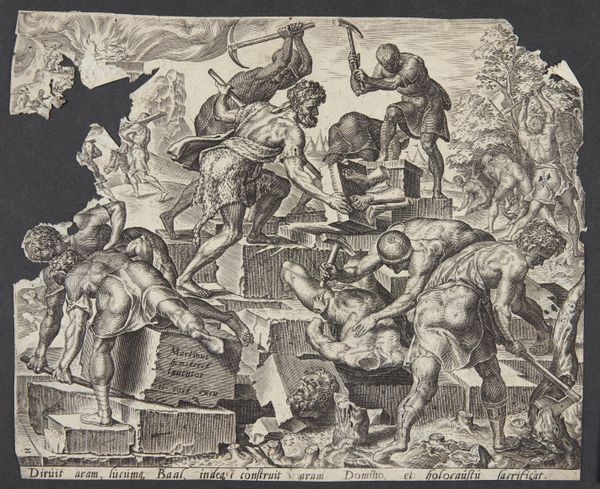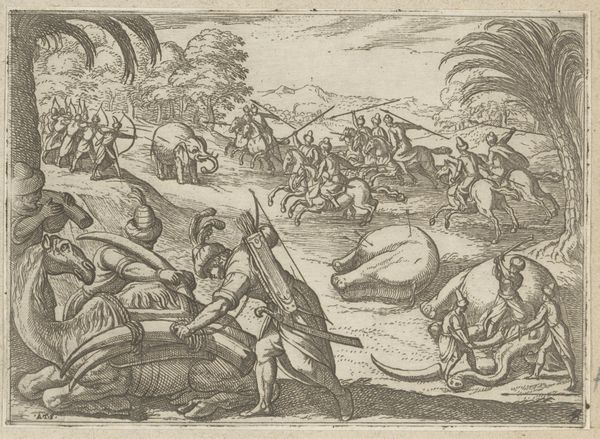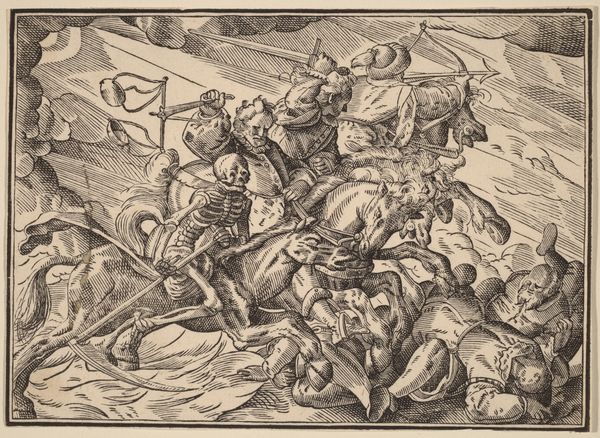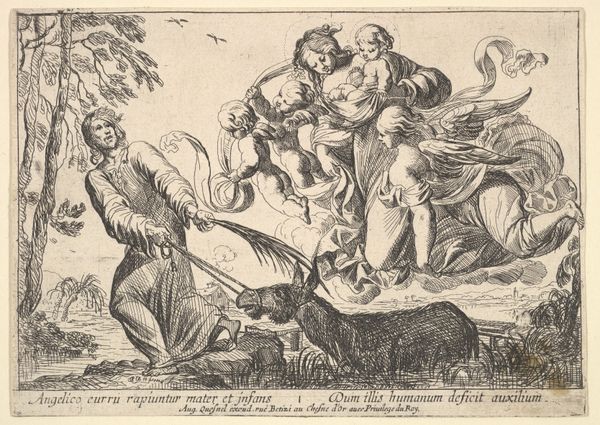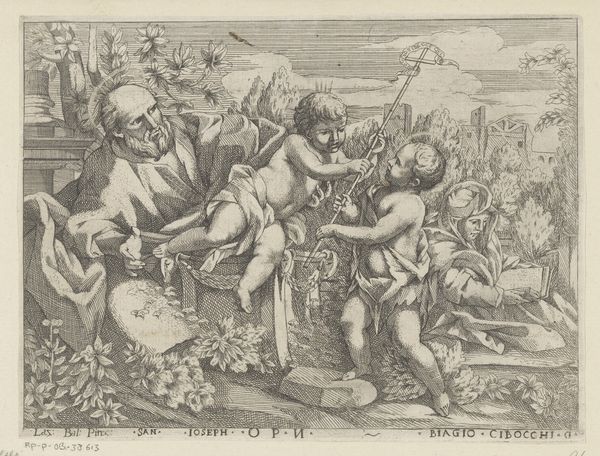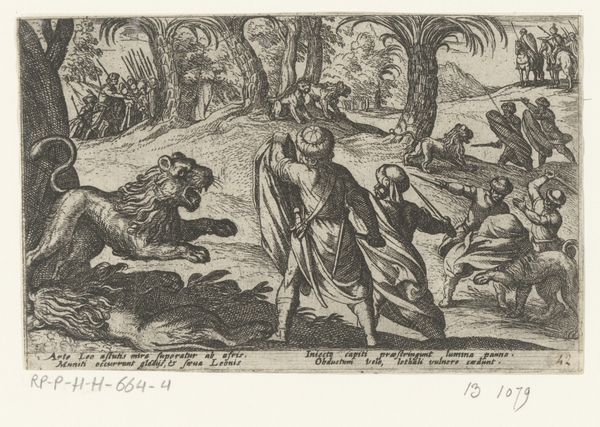
print, engraving
#
allegory
#
pen drawing
# print
#
figuration
#
history-painting
#
northern-renaissance
#
engraving
Dimensions: sheet: 10.7 x 14.8 cm (4 3/16 x 5 13/16 in.)
Copyright: National Gallery of Art: CC0 1.0
Editor: This engraving, possibly from 1630, is titled "The Four Horsemen of the Apocalypse" and attributed to Christoph Murer. The density of figures creates an almost overwhelming feeling of chaos. What do you see in this piece, considering the intense visual drama? Curator: Formally, the artwork is defined by dynamic lines and densely packed figures. Note how Murer uses hatching and cross-hatching to build form and create a sense of depth. The composition is organized around a central vortex of violence, pulling the viewer's eye into the chaos. Do you see how the figures, both human and angelic, are contorted in extreme poses? Editor: Yes, it’s as if every character is fighting to escape the center. The line work creates such a textured effect, and really accentuates the movement. How does that affect our reading of the overall image? Curator: The dramatic chiaroscuro effect amplifies the sense of impending doom and destruction. The bright areas highlight the angelic figures and God enthroned in the upper right, while the lower portion of the artwork remains dark and dense with figures and action, representing earthly chaos and suffering. Do you find the interplay of light and shadow adds another layer to its symbolic impact? Editor: Absolutely, the stark contrast emphasizes the battle between good and evil. I'm beginning to see how the formal qualities serve the subject matter. Curator: Indeed. The strategic deployment of formal elements guides our reading and underscores the themes of judgment, destruction, and ultimately, perhaps, redemption. Editor: It’s amazing how much narrative can be conveyed through line and composition alone. Curator: Precisely; in the hands of a master engraver, these basic artistic tools speak volumes.
Comments
No comments
Be the first to comment and join the conversation on the ultimate creative platform.
